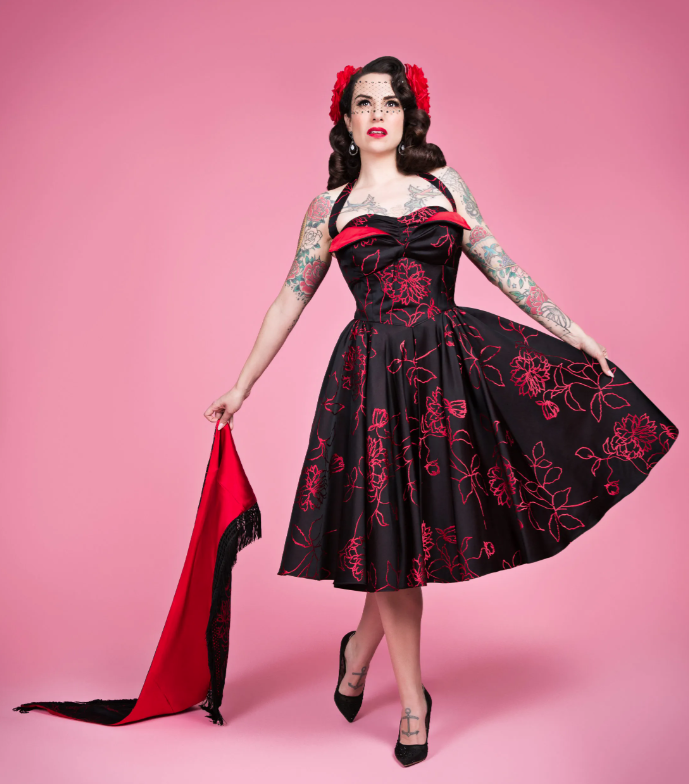We’re so excited to introduce you to the Lana Dress! This design was inspired by a ’50s design and named after the glamorous Lana Turner. With a petal bust design (also called a wing bust), you can create dramatic allure with contrasting fabrics and colors. Use our mix-and-match design options to fashion a daytime romper (with our Loretta shorts), or take it up a notch with layers of silk and lace for dancing all night.
The Lana Dress is compatible with any of our Lamour-series skirts and bodices, so you can mix-and-match to your heart’s content. Our detailed instructions will guide you through creating a beautifully fitted and constructed garment using couture sewing techniques, with an additional design chapter with ideas for using fringe, sheers, shirring, and turning this fabulous pattern into your dream wedding dress.

FABRIC NOTES
Main Fabric: light- to medium-weight wovens: cottons like poplin, sateen, and lawn; silks with body like dupioni and shantung; linen and linen blends; brocade; sheers like flocked tulle, lace, and eyelet.
Lining: light- to medium-weight cottons and lining fabrics. You will be sewing boning channeling to the lining, so it should be sturdy enough to stand up to the weight of the steel boning. The petal lining will be visible, so you may want to choose a contrasting fabric.
Underlining: use a sturdy muslin (calico) for opaque dress fabrics. For sheers, pick an underlining that will be both sturdy and attractive (since it will be visible from the outside of your dress). Good choices include cotton broadcloth, sturdy silks like shantung or faille, and sturdy lining fabrics.
SUPPLIES
- Dress and lining fabric
- Contrast fabric for petal lining and/or bra (optional)
- Muslin (or other fabric) for bodice underlining
- Thread to match fabric
- 3 yards (2.7 m) of ¼-inch-wide (6 mm) spiral steel boning
- Metal cutters and pliers
- Boning tips or Teflon tape
- 3 yards (2.7 m) of ½-inch-wide (1.3 cm) boning channeling or bias tape
- 18-inch zipper
- ¼ yard (0.2 m) fusible interfacing or roll of 1¼-inch-wide (3 cm) fusible stay tape to stabilize zipper opening







